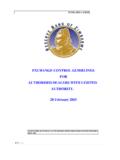Transcription of AML Model Validation in Compliance with OCC 11 …
1 AML Model Validation in Compliance with OCC 11-12: Supervisory Guidance on Model Risk Management Abstract: Supervisory Guidance on Model Risk Management (OCC SR 11-7 establishes requirements for Model validations. Model validations verify that models are performing as intended to meet the defined business objectives. The guidance states that Model validations should be performed at least annually to help reduce the Model risk. This white paper describes Validation approaches and methodologies used to comply with the guidance with an emphasis on Model Validation . By: Susan Devine, CPA, CAMS Table of Contents 1 Supervisory Guidance on Model Risk Management.)
2 1 OCC 11-12 and AML Models ..2 Vendor Model Validation ..2 Model Validation Core Elements ..3 2 Role of AML Risk Assessment in AML Model Validation ..4 Model Risk ..4 3 Validating the Conceptual Soundness of AML Models ..5 Defined Business Objectives ..5 Documentation ..6 Methodology ..7 Limitations and Assumptions ..8 Data ..9 Implementation .. 11 Conclusion .. 12 4 Validating Ongoing Performance of AML Models .. 14 Performance Monitoring and Data Analytics .. 15 Tuning and Calibration .. 16 Conclusion .. 17 5 Validating Outcomes Analysis .. 18 Transaction Testing Planning and Resource Requirements .. 19 Analyze Monitoring Rules and Parameters .. 20 Select Rules for Testing.
3 22 Above-the-Line Testing .. 23 Below-the-Line 24 Model Outputs and Reports .. 24 Summary and Reporting Validation Results .. 25 Appendix 1: BSA Data Requirements .. 26 1 1 Supervisory Guidance on Model Risk Management Banks use a range of models to perform quantitative analysis, including estimating exposure, managing capital, measuring risk, safeguarding assets and Compliance . Decisions that incorporate the use of models can materially affect the operational and financial outcomes of a bank. In response to increasing reliance on models, the Federal Reserve and Office of the Controller of the Currency (OCC) issued Bulletin OCC 11-12 that expanded the supervisory guidance in Bulletin OCC 2000-16, Model Validation , issued May 30, 2000.
4 Model Validation remains a core component of OCC 11-12 and this paper demonstrates how OCC 11-12 applies to anti-money laundering (AML) models and describes Validation strategies and techniques that comply with the guidance. Models perform mathematical analysis on a set of input data and assumptions to estimate, project, or predict a real-world occurrence. OCC 11-12 defines a Model as a, quantitative method, system, or approach that applies statistical, economic, financial, or mathematical theories, techniques and assumptions to process input data into quantitative estimates. i Based on this definition, AML applications qualify as models because they: Use quantitative methods such as aggregating transactions Use statistical techniques, such as standard deviations, to identify unusual activities Apply AML theories, such as structuring, to identify suspicious activities Rely on specific assumptions, such as Risk Ratings or thresholds, to tailor the level of monitoring applied OCC11-12 requires banks to assess Model risk through a Model Validation process that poses an effective challenge to models.
5 According to OCC 11-12, an effective challenge is a, critical analysis by objective, informed parties who can identify Model limitations and assumptions and produce appropriate change. I A Model Validation serves as an effective challenge to determine whether a Model meets defined business objectives within a framework that effectively manages the risks associated with the models. Automated transaction monitoring and AML Models can be confused. Automated transaction monitoring focuses on identifying transactions that meet a set basic criteria such as transactions executed by specific individuals. AML Models use complex logic to assess whether the transactions represent unusual or suspicious activity.
6 AML Models do not rely on just one or a few criteria, but rather interpreting the transactions based on the originator, recipient, transaction type, amount, risk, and other parameters defined. 2 OCC 11-12 and AML Models The BSA specifically requires banks to file a suspicious activity report (SAR) for any suspicious activity. The Financial Crimes Enforcement Network (FinCEN) provides guidance on suspicious Generally, suspicious activity is identified as an unusual transaction that does not align with the customer s transaction profile and evasion of identity by the customer. The BSA Examination Manual states that, Suspicious activity reporting forms the cornerstone of the BSA reporting system.
7 Iii The transaction monitoring performed by AML models is the primary tool banks use to detect suspicious activity. This critical role including significant recent enforcement actions speak to the importance of AML models. AML models can perform a range of functions, such as calculating customer risk ratings, flagging transactions executed by individuals with names matching or similar to known terrorists or money launderers, and generating alerts for suspicious activity that requires investigation through transaction monitoring against defined criteria. Transaction monitoring is not feasible without an AML Model that can apply a set of complex algorithms to millions of records to produce a subset of transactions that meet the criteria for selection.
8 The unique capabilities of AML models and OCC 11-12 require that an AML Model validator have AML expertise. OCC 11-12 requires that banks maintain a Model inventory that provides comprehensive information for models in use, under development, or recently retired. The information retained for each Model should be commensurate with the Model s complexity. Typically, banks prioritize models based on their associated risks. AML models pose significant Model risk because they ensure Compliance with laws and regulations, specifically the Bank Secrecy Act. Compliance with OCC 11-12 requires that: AML Model validators have AML expertise that includes experience in the field of money laundering, detection of suspicious activity and financial investigations, with a background in regulatory Compliance , financial auditing or analysis, or financial investigation The AML Model is included on the bank s Model inventory with appropriate information Vendor Model Validation There are multiple vendors that provide AML models.
9 OCC 11-12 requires evaluation of the same core elements for vendor models as for internally developed models. OCC 11-12 also requires validators to review the process used to select vendor models and states that vendors should provide information on the Model s design, components and capabilities, assumptions, limitations, and ongoing performance monitoring and outcomes analysis. In addition, the BSA Examination Manual states, If the system was provided by an outside vendor, request (i) a list that includes the vendor, (ii) application names, and (iii) installation dates of any automated account monitoring system provided by an outside vendor.
10 Request a list of the algorithms or rules used by the systems and copies of the 3 independent Validation of the software against these rules. iv Frequently, vendors are unwilling to provide detailed Model specifications because they consider them proprietary and confidential. However, validators can decipher the Model s specifications and logic through testing each logical component as described in Section 5. Vendors can usually provide some evidence of an independent Validation of the product. While these reports can provide some evidence useful in a Validation , validators cannot solely rely on these reports because implementation of the Model can significantly impact the Model s ability to meet its intended business purpose.
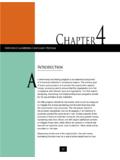
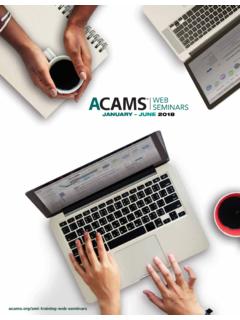
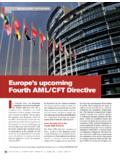
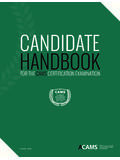
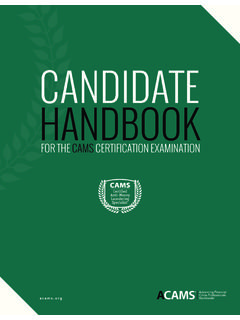
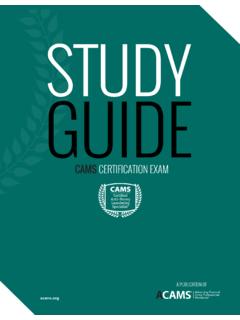
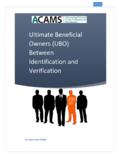
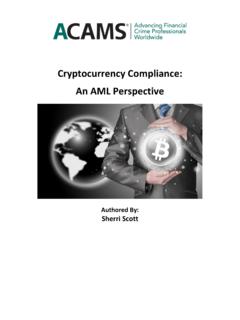
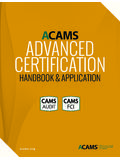
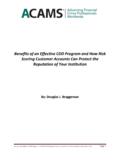
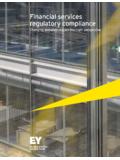

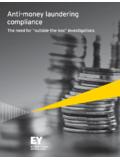
![-:HSTCQE=V]ZUVW: 20 2012 08 1 P - oecd.org](/cache/preview/7/2/d/a/9/f/9/f/thumb-72da9f9fb260ce23f17d3cca6cdecbc1.jpg)
